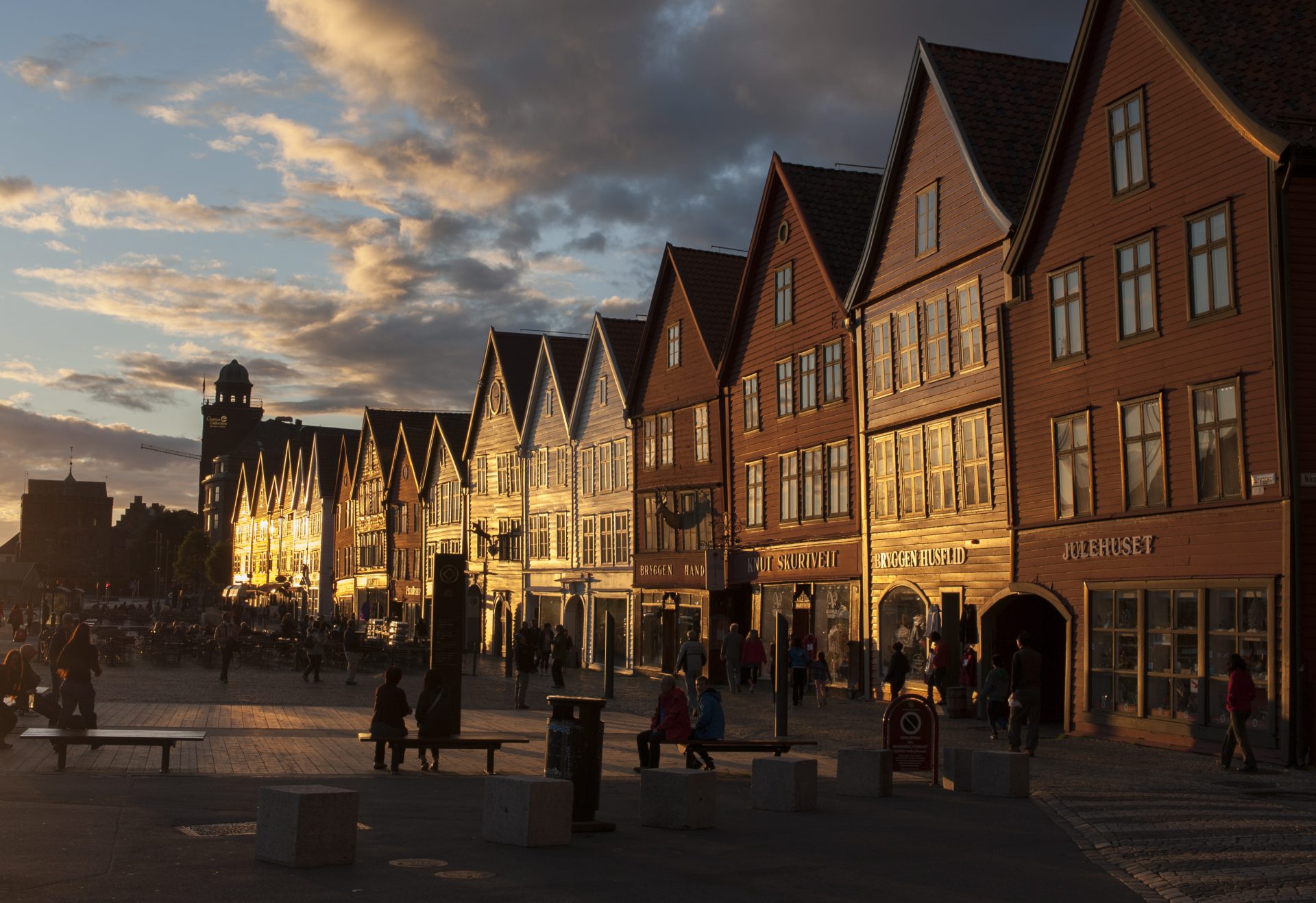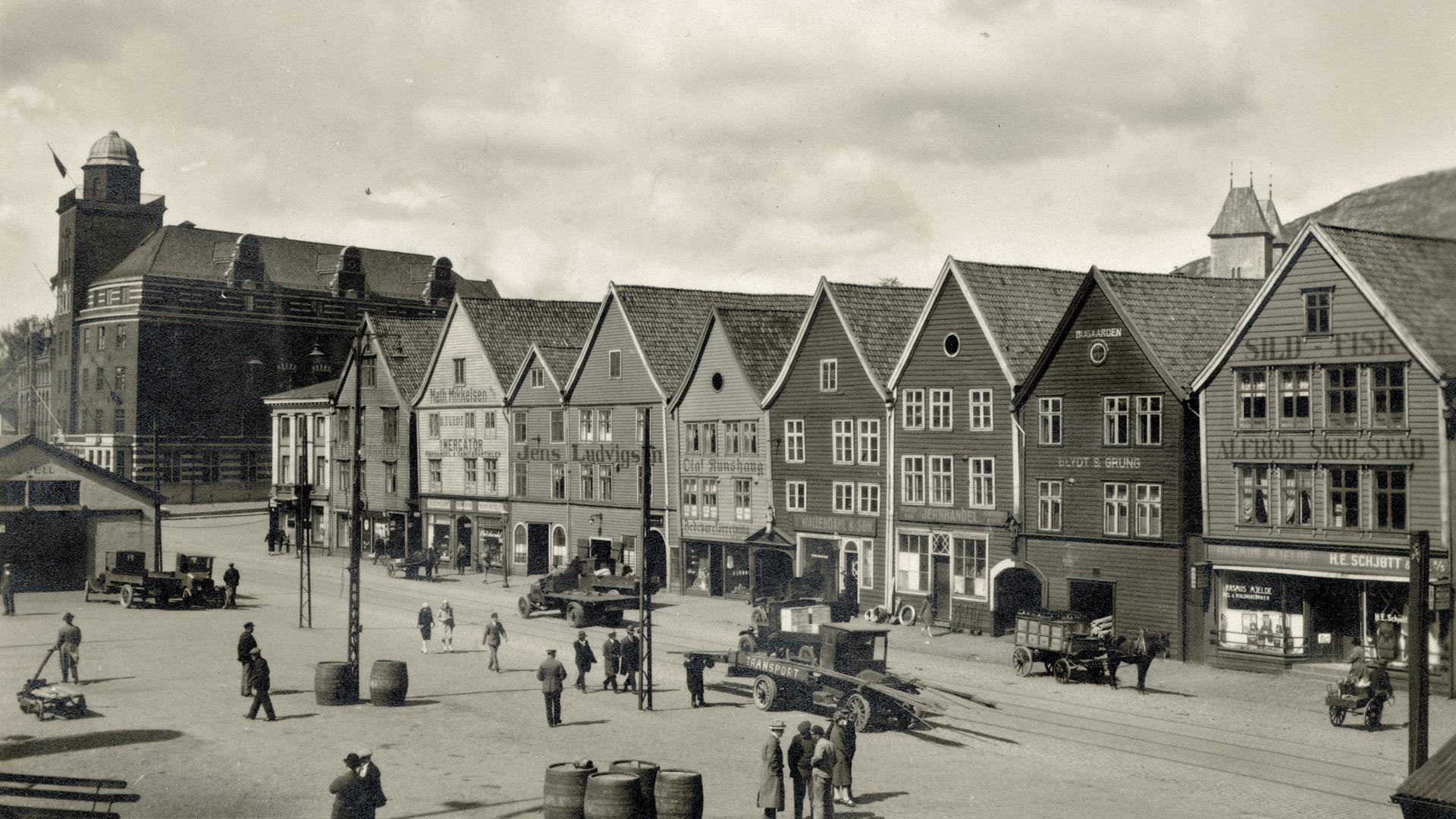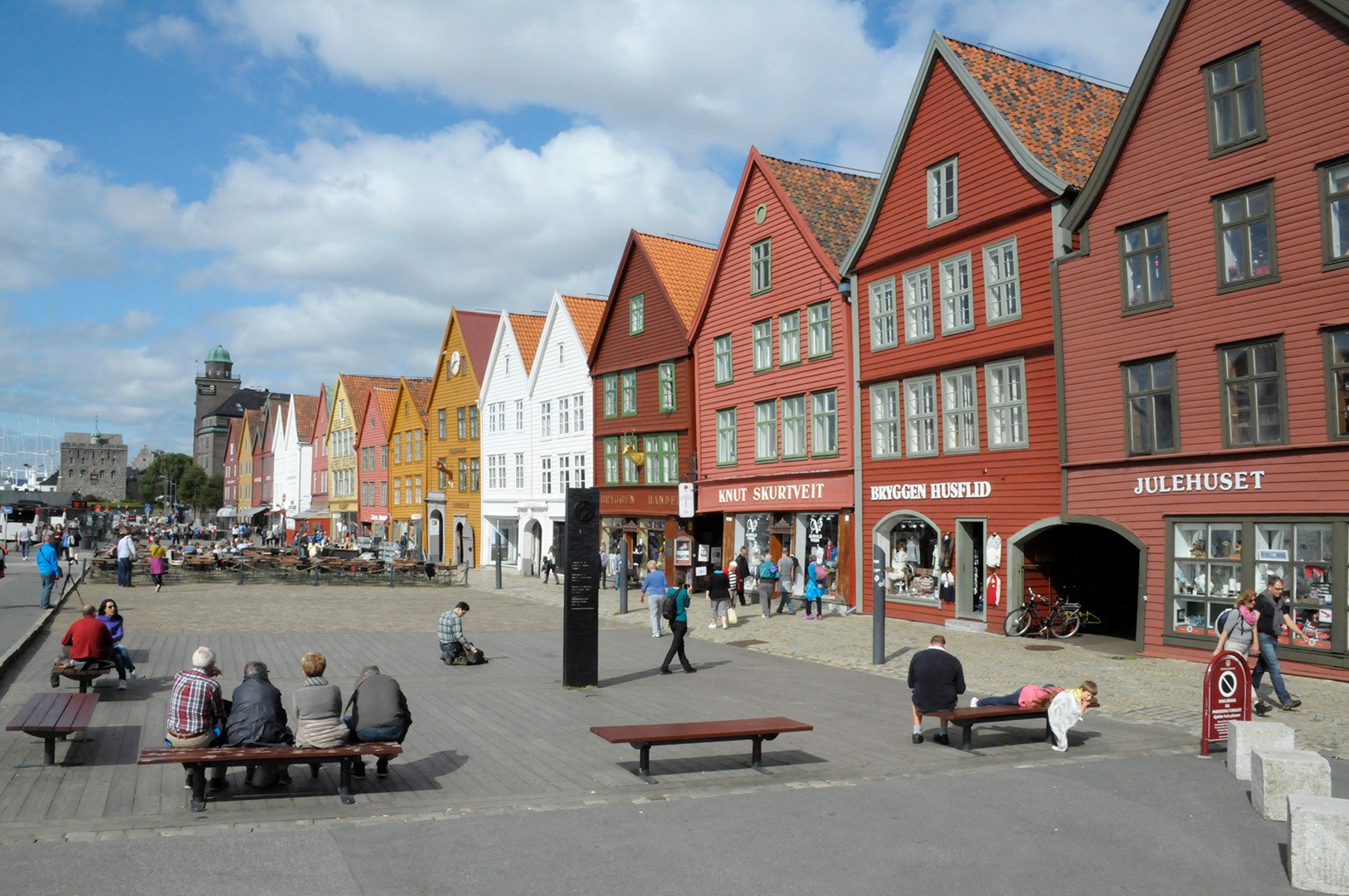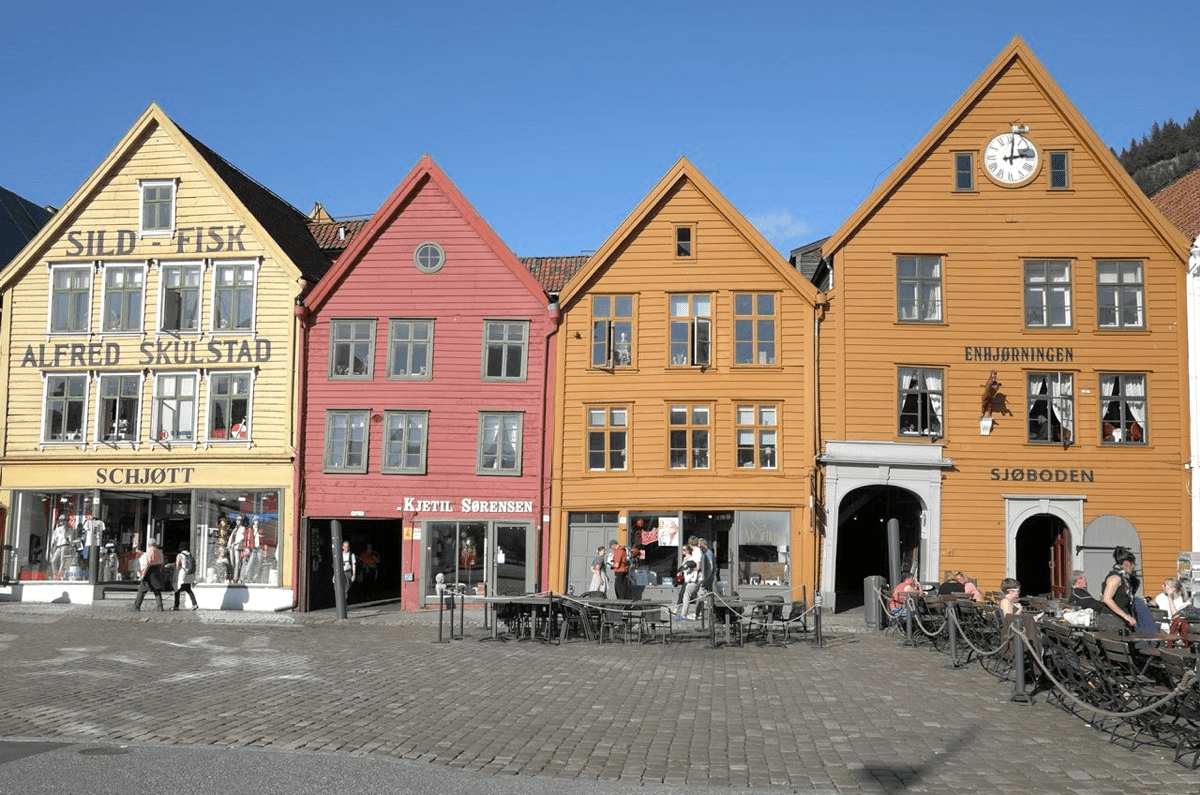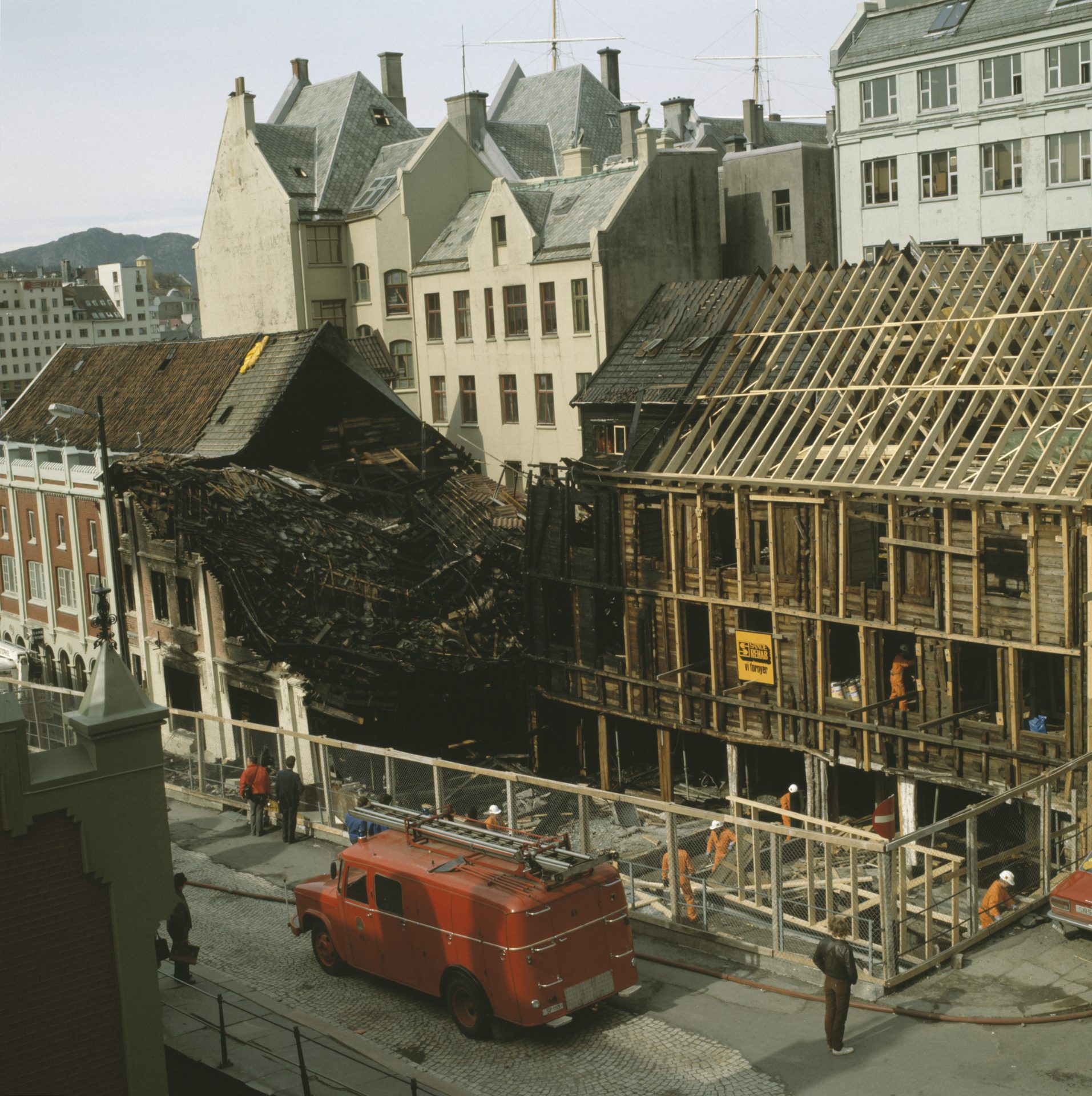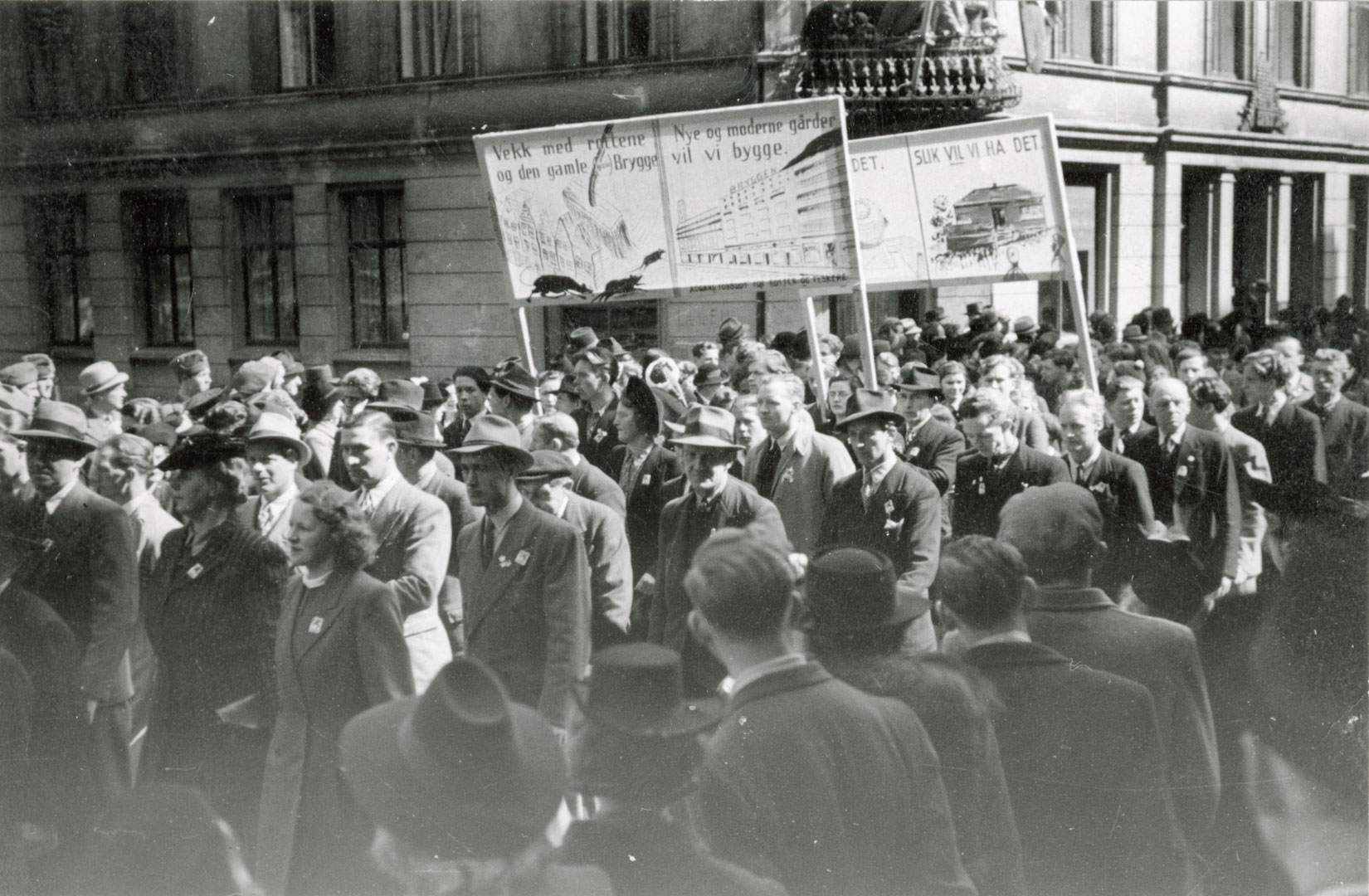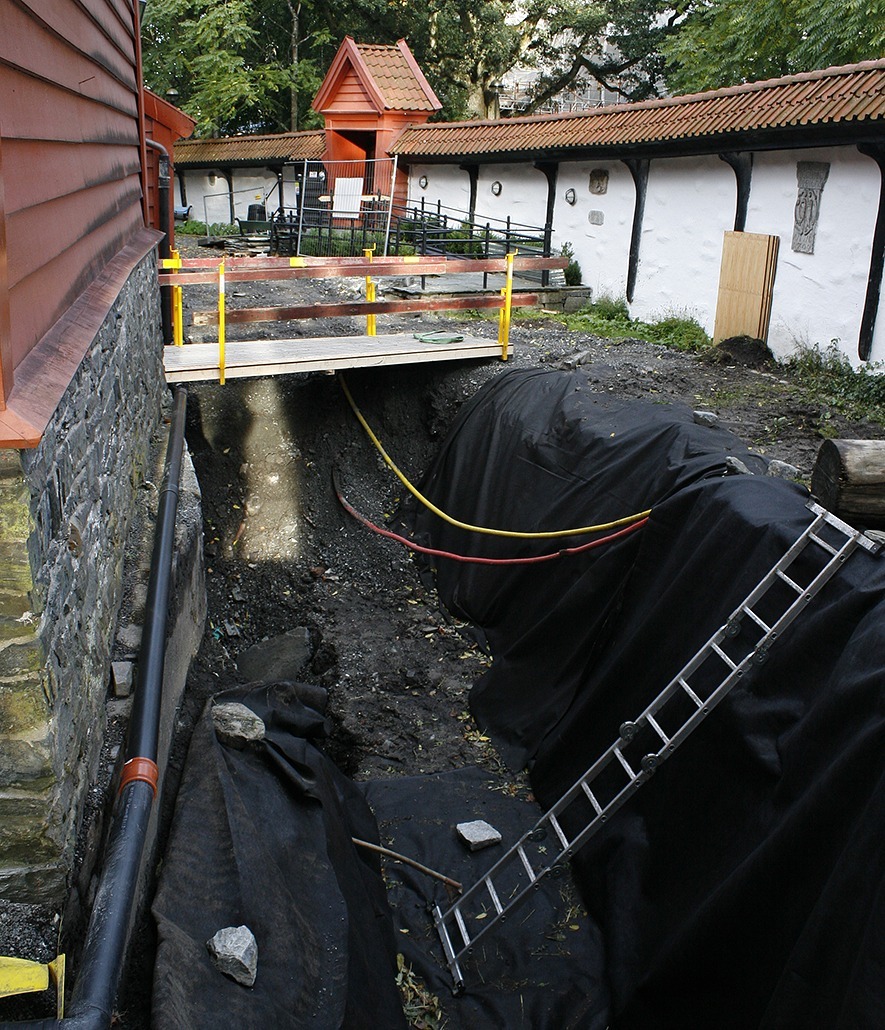World heritage
Bryggen in Bergen
In the Middle Ages, Bryggen in Bergen was a lively centre for international trade. The characteristic rows of houses built perpendicular to the sea is an example of an architectural style that is nearly 900 years old.
About Bryggen
The traditional wooden architecture is evidence to the fact that Bergen is one of the oldest trading cities in northern Europe. Bergen is the only trading city outside of the Hanseatic League where the original structure remains present in the centre of the city.
The houses on Bryggen are built in parallel rows perpendicular to the waterfront, on one or both sides of a shared passage between the buildings. The structure has looked the same since the Middle Ages. The houses were once used as homes, offices and warehouses for the international stockfish trade.
This original use of the area only ended in the 1900s, ending a tradition that dates back 700-800 years.
Despite several devastating fires in the city, the buildings have been rebuilt within the original property boundaries. The current wooden structures were built following a fire in 1702. Following subsequent fires in 1955 and 1958, around a quarter of the original buildings remain intact.
World Heritage
Bryggen was inscribed on the World Heritage List in 1979.
